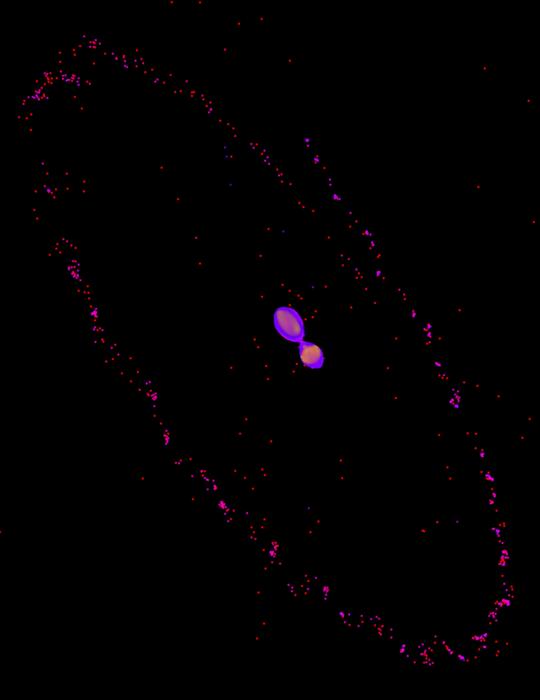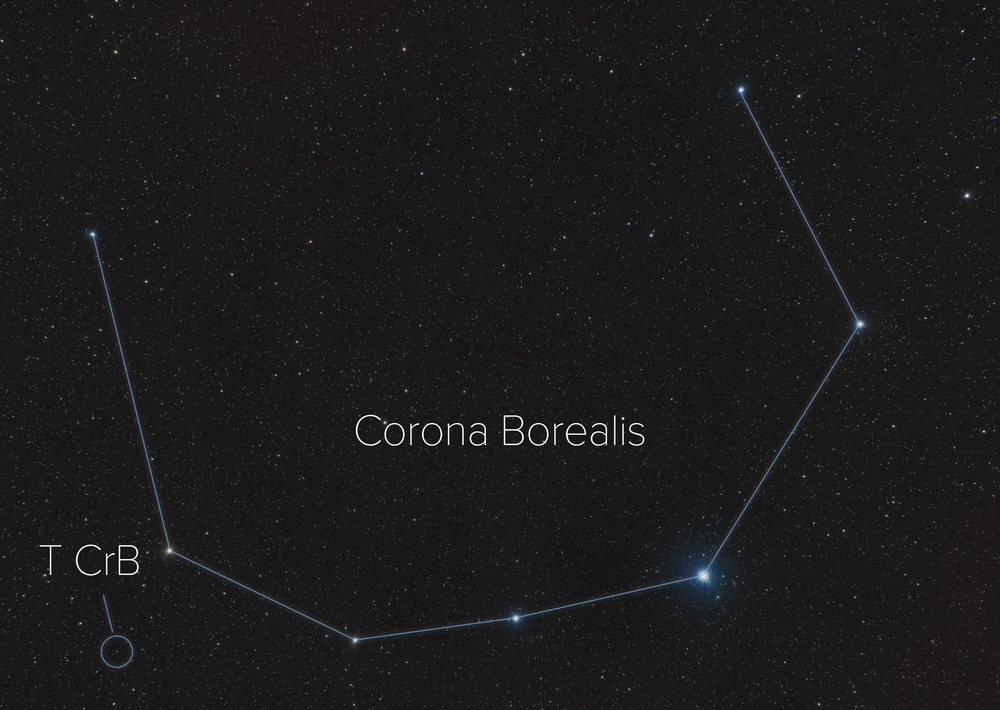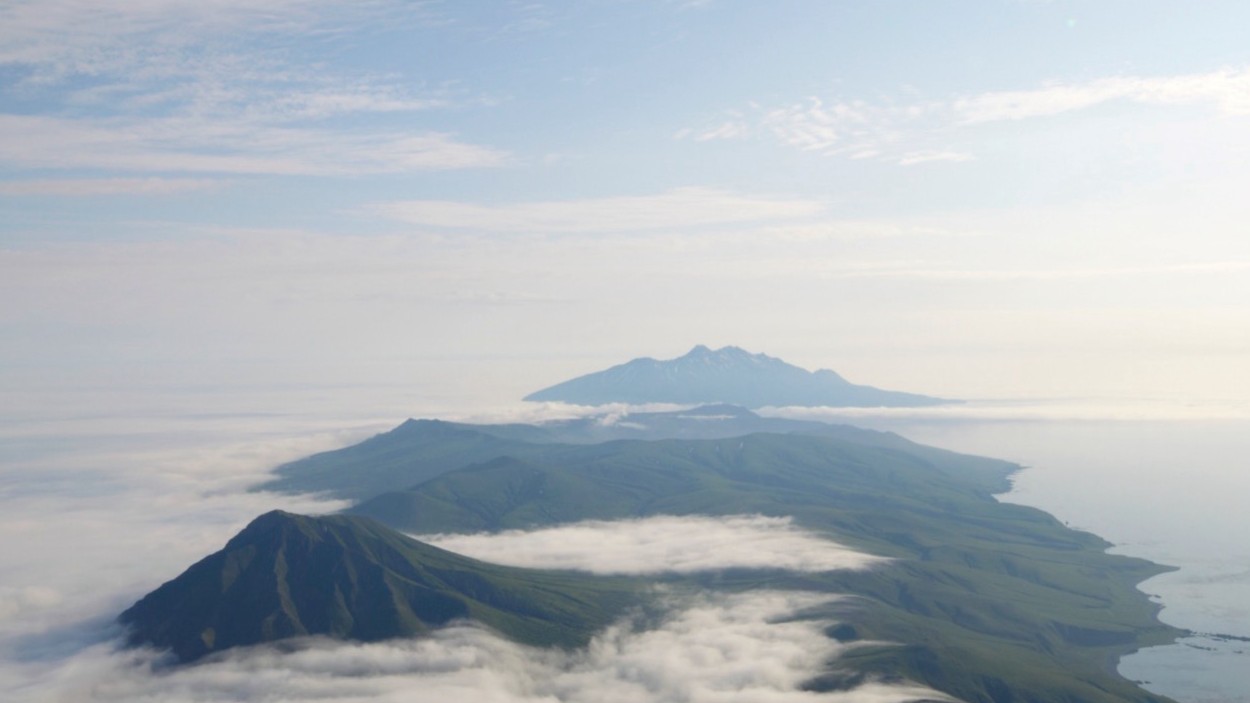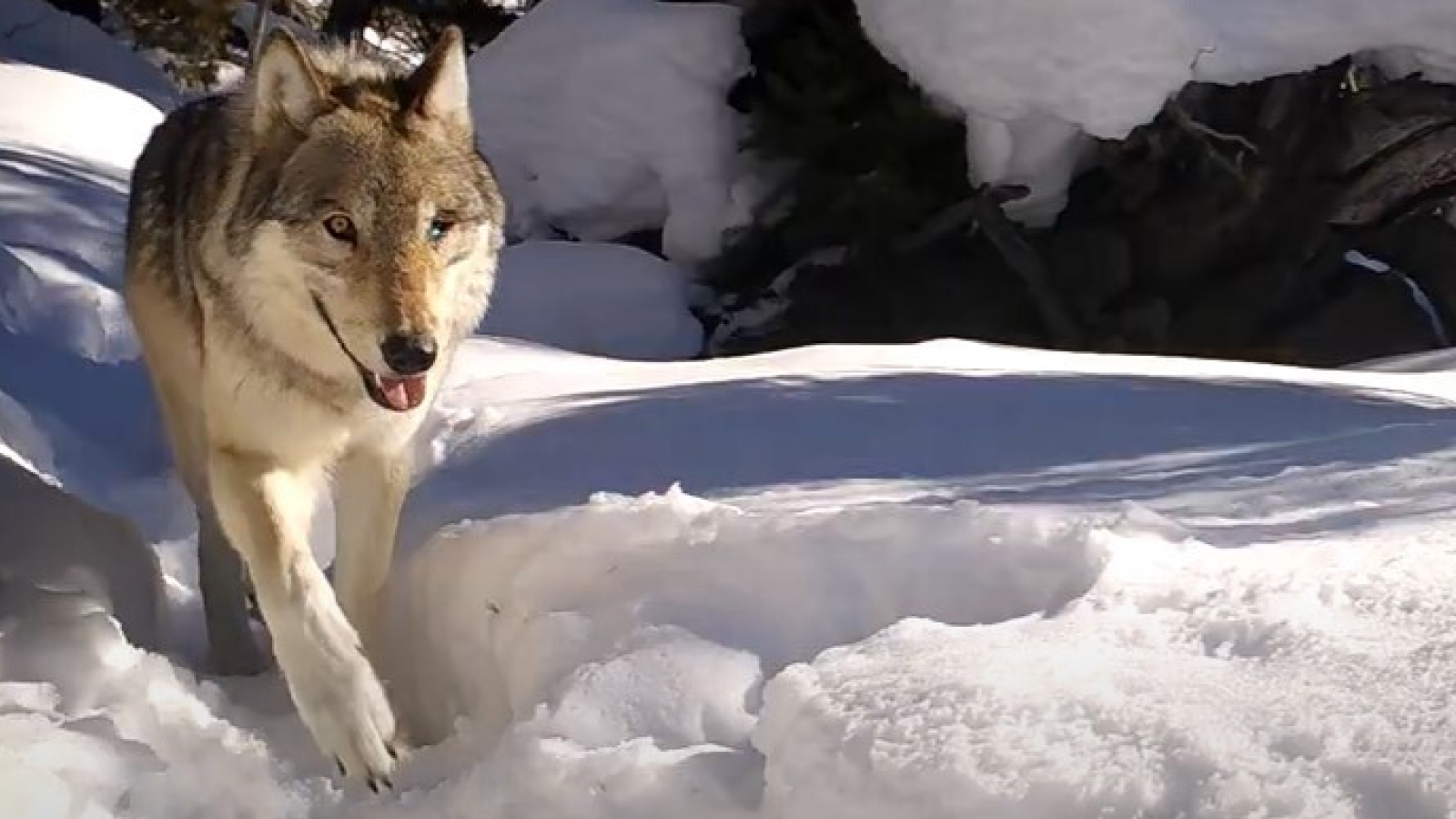0 Comentários
0 Compartilhamentos
219 Visualizações

Diretório
Diretório
-
Faça o login para curtir, compartilhar e comentar!
-
 WWW.DISCOVERMAGAZINE.COMPluto May Have Formed From the Newly Discovered Kiss and Capture MechanismNew research from the University of Arizona (U of A) claims that Pluto may not have been created with a bang, but with a kiss.The study, published in Nature Geoscience, looks at how Pluto and its moon, Charon, originated after colliding. Instead of destroying each other, the two celestial bodies began to spiral together like a cosmic snowman before separating into two bodies again. Whats unique about the separation is that Pluto and Charon still share the same orbit.This new discovery is helping researchers better understand how planets form and evolve, especially icy worlds. The research team refers to this new form of cosmic collision as a "kiss and capture."Molten PuttyUntil recently, researchers believed that Charon formed similarly to Earths moon via a massive collision followed by deformation and stretching of planetary materials sort of like silly putty until the materials were pulled into Earths orbit and solidified into the moon.Researchers had theorized that Earth was hotter and its surface was more molten, making it easier for the planetary materials to act more fluid during a collision. Whats different about Pluto is that it is far colder than Earth and likely more brittle."Pluto and Charon are different they're smaller, colder, and made primarily of rock and ice," said Adeene Denton, a NASA postdoctoral fellow who conducted the research at the U of A Lunar and Planetary Laboratory and lead author of the study, in a press release. When we accounted for the actual strength of these materials, we discovered something completely unexpected.Read More: Supervolcano Discovered on PlutoPluto Formation with Kiss and CaptureAs the research team ran an impact simulation through advanced software at the U of A, they discovered that Pluto, and what would become Charon, became temporarily stuck together instead of being stretched like putty. The two then began rotating as a single snowman-shaped cluster until they separated into a binary system.According to the researchers, a binary system happens when two celestial bodies orbit around the same center, similar to two figure skaters spinning while holding hands."Most planetary collision scenarios are classified as 'hit and run' or 'graze and merge, said Denton in a press release. What we've discovered is something entirely different a 'kiss and capture' scenario where the bodies collide, stick together briefly, and then separate while remaining gravitationally bound."From this study, the research team believes that Pluto and Charon likely stayed mostly intact during the collision and that during the separation, there may have been a massive heat transfer that made it possible for Pluto to have a subsurface ocean. The research team is already planning additional studies to uncover more of Plutos mysteries and learn more about binary systems."We're particularly interested in understanding how this initial configuration affects Pluto's geological evolution," Denton said in a press release. "The heat from the impact and subsequent tidal forces could have played a crucial role in shaping the features we see on Pluto's surface today."Article Sources:Our writers at Discovermagazine.com use peer-reviewed studies and high-quality sources for our articles, and our editors review for scientific accuracy and editorial standards. Review the sources used below for this article:Nature Geoscience. Capture of an ancient Charon around PlutoNASA. Moon FormationA graduate of UW-Whitewater, Monica Cull wrote for several organizations, including one that focused on bees and the natural world, before coming to Discover Magazine. Her current work also appears on her travel blog and Common State Magazine. Her love of science came from watching PBS shows as a kid with her mom and spending too much time binging Doctor Who.0 Comentários 0 Compartilhamentos 143 Visualizações
WWW.DISCOVERMAGAZINE.COMPluto May Have Formed From the Newly Discovered Kiss and Capture MechanismNew research from the University of Arizona (U of A) claims that Pluto may not have been created with a bang, but with a kiss.The study, published in Nature Geoscience, looks at how Pluto and its moon, Charon, originated after colliding. Instead of destroying each other, the two celestial bodies began to spiral together like a cosmic snowman before separating into two bodies again. Whats unique about the separation is that Pluto and Charon still share the same orbit.This new discovery is helping researchers better understand how planets form and evolve, especially icy worlds. The research team refers to this new form of cosmic collision as a "kiss and capture."Molten PuttyUntil recently, researchers believed that Charon formed similarly to Earths moon via a massive collision followed by deformation and stretching of planetary materials sort of like silly putty until the materials were pulled into Earths orbit and solidified into the moon.Researchers had theorized that Earth was hotter and its surface was more molten, making it easier for the planetary materials to act more fluid during a collision. Whats different about Pluto is that it is far colder than Earth and likely more brittle."Pluto and Charon are different they're smaller, colder, and made primarily of rock and ice," said Adeene Denton, a NASA postdoctoral fellow who conducted the research at the U of A Lunar and Planetary Laboratory and lead author of the study, in a press release. When we accounted for the actual strength of these materials, we discovered something completely unexpected.Read More: Supervolcano Discovered on PlutoPluto Formation with Kiss and CaptureAs the research team ran an impact simulation through advanced software at the U of A, they discovered that Pluto, and what would become Charon, became temporarily stuck together instead of being stretched like putty. The two then began rotating as a single snowman-shaped cluster until they separated into a binary system.According to the researchers, a binary system happens when two celestial bodies orbit around the same center, similar to two figure skaters spinning while holding hands."Most planetary collision scenarios are classified as 'hit and run' or 'graze and merge, said Denton in a press release. What we've discovered is something entirely different a 'kiss and capture' scenario where the bodies collide, stick together briefly, and then separate while remaining gravitationally bound."From this study, the research team believes that Pluto and Charon likely stayed mostly intact during the collision and that during the separation, there may have been a massive heat transfer that made it possible for Pluto to have a subsurface ocean. The research team is already planning additional studies to uncover more of Plutos mysteries and learn more about binary systems."We're particularly interested in understanding how this initial configuration affects Pluto's geological evolution," Denton said in a press release. "The heat from the impact and subsequent tidal forces could have played a crucial role in shaping the features we see on Pluto's surface today."Article Sources:Our writers at Discovermagazine.com use peer-reviewed studies and high-quality sources for our articles, and our editors review for scientific accuracy and editorial standards. Review the sources used below for this article:Nature Geoscience. Capture of an ancient Charon around PlutoNASA. Moon FormationA graduate of UW-Whitewater, Monica Cull wrote for several organizations, including one that focused on bees and the natural world, before coming to Discover Magazine. Her current work also appears on her travel blog and Common State Magazine. Her love of science came from watching PBS shows as a kid with her mom and spending too much time binging Doctor Who.0 Comentários 0 Compartilhamentos 143 Visualizações -
 WWW.DISCOVERMAGAZINE.COMThe Blaze Star Will Soon Explode After 80 Years of WaitingT Coronae Borealis, the binary star that will potentially light up later this year, can be found right near the constellation Corona Borealis in the northern sky. (Credit: Jakob Weyde/Shutterstock).NewsletterSign up for our email newsletter for the latest science newsThe clock is ticking for the binary star T Coronae Borealis, as its only a matter of time before it explodes in a blaze of light that will be visible here on Earth. Although astronomers arent sure exactly when this spectacle will unfold, they say the binary star given the fiery nickname, the Blaze Star is likely to ignite later in 2025.The Explosive Cycle of T CrBT Coronae Borealis (T CrB) is a nova located about 3,000 light-years from Earth in the constellation Corona Borealis (the Northern Crown), which lies in the northern sky. It consists of two stars that orbit each other: one is a white dwarf star the hot, dense stellar core that remains after a low- or intermediate-mass star has exhausted its fuel, nearing the end of its evolution. The other is a red giant, a previous stage of stellar evolution in which a dying star with an expanding radius and diminishing surface temperature runs out of hydrogen fuel.The interaction between these two stars incites a fierce reaction that will massively increase the luminosity of the star system for a brief amount of time. As the red giant sheds its outer layers, the white dwarf will pull the hydrogen waste to its own surface. This causes a buildup of pressure and heat, and eventually the star reaches a breaking point and experiences a thermonuclear explosion.The sight of this nova is something that most people on Earth may only get to see once in their life. This is because T CrB is a recurrent nova, meaning it goes through a cycle in which the white dwarf is fed material from its companion star, ignites, and then repeats the process over again (a nova usually does not result in the destruction of a white dwarf, unlike what happens in most supernovae).Waiting 80 Years For a NovaT CrB was first discovered in 1866 by Irish astronomer John Birmingham, although it wasnt until the next nova in 1946 that astronomers realized it only makes an appearance every 80 years. Based on this cycle, were now overdue for another T CrB flareup.Signs of an impending explosion began to appear in 2016 when the star significantly brightened, and then, in April 2024, a notable dip in brightness was announced by the American Association of Variable Star Observers.This series of events an approximately decade-long increase in brightness before a sudden pre-eruption dip follows the same lead-up to the previous 1946 nova. With this in mind, scientists initially predicted that the nova would occur sometime between Late Spring and Early Fall 2024. However, the year passed and T CrB remained idle.The truth is, novae like T CrB are somewhat unpredictable and dont adhere to a strict schedule. The changes in brightness indicate that the nova could happen any day now, yet its impossible to pinpoint an exact date. Astronomers are confident, though, that it will take place in 2025, and theyll continue to closely monitor the white dwarf near the Corona Borealis constellation for any developments.Where Will T CrB Show Up?From our point of view on Earth, the nova will result in a newly brightened star popping up in the night sky. However, it will only be visible for a few days before fading, so stargazers may want to be prepared for whenever T CrB decides to shine.The star will appear in between the constellations Hercules and Botes; another way to track it down is to draw a straight line from Arcturus to Vega, two of the brightest stars in the northern celestial hemisphere. The constellation Corona Borealis lies nearly right in the middle of this imaginary line, and T CrB will gleam right beside the constellation. Article SourcesOur writers at Discovermagazine.com use peer-reviewed studies and high-quality sources for our articles, and our editors review for scientific accuracy and editorial standards. Review the sources used below for this article:NASA. Types of Stars The Planetary Society. How to see the nova (new star) in Corona BorealisJack Knudson is an assistant editor at Discover with a strong interest in environmental science and history. Before joining Discover in 2023, he studied journalism at the Scripps College of Communication at Ohio University and previously interned at Recycling Today magazine.0 Comentários 0 Compartilhamentos 147 Visualizações
WWW.DISCOVERMAGAZINE.COMThe Blaze Star Will Soon Explode After 80 Years of WaitingT Coronae Borealis, the binary star that will potentially light up later this year, can be found right near the constellation Corona Borealis in the northern sky. (Credit: Jakob Weyde/Shutterstock).NewsletterSign up for our email newsletter for the latest science newsThe clock is ticking for the binary star T Coronae Borealis, as its only a matter of time before it explodes in a blaze of light that will be visible here on Earth. Although astronomers arent sure exactly when this spectacle will unfold, they say the binary star given the fiery nickname, the Blaze Star is likely to ignite later in 2025.The Explosive Cycle of T CrBT Coronae Borealis (T CrB) is a nova located about 3,000 light-years from Earth in the constellation Corona Borealis (the Northern Crown), which lies in the northern sky. It consists of two stars that orbit each other: one is a white dwarf star the hot, dense stellar core that remains after a low- or intermediate-mass star has exhausted its fuel, nearing the end of its evolution. The other is a red giant, a previous stage of stellar evolution in which a dying star with an expanding radius and diminishing surface temperature runs out of hydrogen fuel.The interaction between these two stars incites a fierce reaction that will massively increase the luminosity of the star system for a brief amount of time. As the red giant sheds its outer layers, the white dwarf will pull the hydrogen waste to its own surface. This causes a buildup of pressure and heat, and eventually the star reaches a breaking point and experiences a thermonuclear explosion.The sight of this nova is something that most people on Earth may only get to see once in their life. This is because T CrB is a recurrent nova, meaning it goes through a cycle in which the white dwarf is fed material from its companion star, ignites, and then repeats the process over again (a nova usually does not result in the destruction of a white dwarf, unlike what happens in most supernovae).Waiting 80 Years For a NovaT CrB was first discovered in 1866 by Irish astronomer John Birmingham, although it wasnt until the next nova in 1946 that astronomers realized it only makes an appearance every 80 years. Based on this cycle, were now overdue for another T CrB flareup.Signs of an impending explosion began to appear in 2016 when the star significantly brightened, and then, in April 2024, a notable dip in brightness was announced by the American Association of Variable Star Observers.This series of events an approximately decade-long increase in brightness before a sudden pre-eruption dip follows the same lead-up to the previous 1946 nova. With this in mind, scientists initially predicted that the nova would occur sometime between Late Spring and Early Fall 2024. However, the year passed and T CrB remained idle.The truth is, novae like T CrB are somewhat unpredictable and dont adhere to a strict schedule. The changes in brightness indicate that the nova could happen any day now, yet its impossible to pinpoint an exact date. Astronomers are confident, though, that it will take place in 2025, and theyll continue to closely monitor the white dwarf near the Corona Borealis constellation for any developments.Where Will T CrB Show Up?From our point of view on Earth, the nova will result in a newly brightened star popping up in the night sky. However, it will only be visible for a few days before fading, so stargazers may want to be prepared for whenever T CrB decides to shine.The star will appear in between the constellations Hercules and Botes; another way to track it down is to draw a straight line from Arcturus to Vega, two of the brightest stars in the northern celestial hemisphere. The constellation Corona Borealis lies nearly right in the middle of this imaginary line, and T CrB will gleam right beside the constellation. Article SourcesOur writers at Discovermagazine.com use peer-reviewed studies and high-quality sources for our articles, and our editors review for scientific accuracy and editorial standards. Review the sources used below for this article:NASA. Types of Stars The Planetary Society. How to see the nova (new star) in Corona BorealisJack Knudson is an assistant editor at Discover with a strong interest in environmental science and history. Before joining Discover in 2023, he studied journalism at the Scripps College of Communication at Ohio University and previously interned at Recycling Today magazine.0 Comentários 0 Compartilhamentos 147 Visualizações -
 WWW.POPSCI.COMConstruction crew discovers Roman stone coffin under British roadThe stone coffin dates back approximately 1,500 years. Credit: National HighwaysShareConstruction workers expanding a section of road north of London needed to pause their project after uncovering an unexpected finda small Roman cemetery dating back roughly 1,500 years. Excavating just one of the coffins in their way was no small feat, either. According to the Englands National Highways department announcement on January 6th, the largely intact stone casket weighed as much as an adult male polar bear. For those unsure about that exact unit of measurement, that puts the coffin at around 1,650 lbs.While our main focus has been on building a road to improve journeys for road users, its been extremely satisfying to play a part in uncovering such an unusual archaeological find, said Chris Griffin, the National Highways east region program leader.The coffin weighs roughly 1,650 lbs. Credit: National Highways While a sovereign state today, a large portion of the UK once composed the Roman territory of Britannia. Julius Caesar initially invaded the island in 55 and 54 BCE during the Gallic Wars, but it wasnt until Claudius reign that a much larger campaign commenced. Rome officially annexed the province of Britannia in 43 CE before ruling over the region for roughly the next 400 years. This means that locals likely buried the large stone coffin towards the end of Roman occupation following almost a half-century of cultural exchange and improvements made to Britains agriculture, architecture, urban planning, and industry. One of the most notable Roman additions to the area was a vast network of roads connecting much of the territory. Despite their immense influence, however, only an estimated 800 Latin words were ultimately incorporated into Common Brittonic by the time of Romes withdrawal from the island. The vast majority of the proto-English language remained firmly intertwined with its Germanic origins. Get the Popular Science newsletter Breakthroughs, discoveries, and DIY tips sent every weekday. By signing up you agree to our Terms of Service and Privacy Policy.David Harrison, project manager for Headland Archeology overseeing the dig, called the coffin a fascinating discovery that is extremely unique to the region. Its careful excavation and recording, both in the field and the laboratory, allows us to continue to learn how our Roman ancestors lived and died, he added.The coffin is just one of a number of artifacts recovered along the stretch of A47 north of London near Cambridgeshire. According to Archeology News, a team of 50 archeologists and 20 civil engineers spent seven months excavating 17 different sites along the roadway. Many of these discoveries will be showcased in the new season of Digging for Britain. The first episodewhich includes the polar bear-sized casketwill premiere on BBC 2 on January 7th.0 Comentários 0 Compartilhamentos 130 Visualizações
WWW.POPSCI.COMConstruction crew discovers Roman stone coffin under British roadThe stone coffin dates back approximately 1,500 years. Credit: National HighwaysShareConstruction workers expanding a section of road north of London needed to pause their project after uncovering an unexpected finda small Roman cemetery dating back roughly 1,500 years. Excavating just one of the coffins in their way was no small feat, either. According to the Englands National Highways department announcement on January 6th, the largely intact stone casket weighed as much as an adult male polar bear. For those unsure about that exact unit of measurement, that puts the coffin at around 1,650 lbs.While our main focus has been on building a road to improve journeys for road users, its been extremely satisfying to play a part in uncovering such an unusual archaeological find, said Chris Griffin, the National Highways east region program leader.The coffin weighs roughly 1,650 lbs. Credit: National Highways While a sovereign state today, a large portion of the UK once composed the Roman territory of Britannia. Julius Caesar initially invaded the island in 55 and 54 BCE during the Gallic Wars, but it wasnt until Claudius reign that a much larger campaign commenced. Rome officially annexed the province of Britannia in 43 CE before ruling over the region for roughly the next 400 years. This means that locals likely buried the large stone coffin towards the end of Roman occupation following almost a half-century of cultural exchange and improvements made to Britains agriculture, architecture, urban planning, and industry. One of the most notable Roman additions to the area was a vast network of roads connecting much of the territory. Despite their immense influence, however, only an estimated 800 Latin words were ultimately incorporated into Common Brittonic by the time of Romes withdrawal from the island. The vast majority of the proto-English language remained firmly intertwined with its Germanic origins. Get the Popular Science newsletter Breakthroughs, discoveries, and DIY tips sent every weekday. By signing up you agree to our Terms of Service and Privacy Policy.David Harrison, project manager for Headland Archeology overseeing the dig, called the coffin a fascinating discovery that is extremely unique to the region. Its careful excavation and recording, both in the field and the laboratory, allows us to continue to learn how our Roman ancestors lived and died, he added.The coffin is just one of a number of artifacts recovered along the stretch of A47 north of London near Cambridgeshire. According to Archeology News, a team of 50 archeologists and 20 civil engineers spent seven months excavating 17 different sites along the roadway. Many of these discoveries will be showcased in the new season of Digging for Britain. The first episodewhich includes the polar bear-sized casketwill premiere on BBC 2 on January 7th.0 Comentários 0 Compartilhamentos 130 Visualizações -
 WWW.POPSCI.COMGo the Kindle Scribe e-reader/digital notebook for its lowest price ever during Amazons winter saleShareWe may earn revenue from the products available on this page and participate in affiliate programs. Learn more The Kindle Scribe lends itself well to a ton of New Years resolutions. Maybe youre trying to journal or stay organized. Or perhaps youre trying to read more on an e-reader instead of scrolling through Tik Tik videos for three hours every night. Amazons write-able Kindle can help with all of them and its cheaper than ever right now. It typically sells for $449, but its $364 right now, which is roughly a 20 percent discount.This is the version with the redesigned and vastly superior screen, so you wont have to worry about a new model coming along in a month and inspiring buyers remorse.New Amazon Kindle Scribe (64 GB) $364 (was $449)Amazon This is the Kindle you can write on.It has a 10.2-inch glare-free display that literally feels like paper as you write on it with the included Premium Pen (Amazons fancy name for its stylus). The hardware works just like a typical Kindle when you want to read a book, but it also allows you to take notes. Once you go into the drawing and writing-specific apps, you can keep searchable digital notes for later reference. The digital notebook offers lines, grids, or plain sheets, so its just like having an endless stationary store at your fingertips.This is a great option for people who are getting into bullet journaling or any other kind of productivity tracking.0 Comentários 0 Compartilhamentos 140 Visualizações
WWW.POPSCI.COMGo the Kindle Scribe e-reader/digital notebook for its lowest price ever during Amazons winter saleShareWe may earn revenue from the products available on this page and participate in affiliate programs. Learn more The Kindle Scribe lends itself well to a ton of New Years resolutions. Maybe youre trying to journal or stay organized. Or perhaps youre trying to read more on an e-reader instead of scrolling through Tik Tik videos for three hours every night. Amazons write-able Kindle can help with all of them and its cheaper than ever right now. It typically sells for $449, but its $364 right now, which is roughly a 20 percent discount.This is the version with the redesigned and vastly superior screen, so you wont have to worry about a new model coming along in a month and inspiring buyers remorse.New Amazon Kindle Scribe (64 GB) $364 (was $449)Amazon This is the Kindle you can write on.It has a 10.2-inch glare-free display that literally feels like paper as you write on it with the included Premium Pen (Amazons fancy name for its stylus). The hardware works just like a typical Kindle when you want to read a book, but it also allows you to take notes. Once you go into the drawing and writing-specific apps, you can keep searchable digital notes for later reference. The digital notebook offers lines, grids, or plain sheets, so its just like having an endless stationary store at your fingertips.This is a great option for people who are getting into bullet journaling or any other kind of productivity tracking.0 Comentários 0 Compartilhamentos 140 Visualizações -
 WWW.NATURE.COM<b>Earth shattered heat records in 2023 and 2024: is global warming speeding up?</b>Nature, Published online: 06 January 2025; doi:10.1038/d41586-024-04242-zNature examines whether the temperature spike is a blip or an enduring and concerning trend.0 Comentários 0 Compartilhamentos 142 Visualizações
WWW.NATURE.COM<b>Earth shattered heat records in 2023 and 2024: is global warming speeding up?</b>Nature, Published online: 06 January 2025; doi:10.1038/d41586-024-04242-zNature examines whether the temperature spike is a blip or an enduring and concerning trend.0 Comentários 0 Compartilhamentos 142 Visualizações -
 WWW.LIVESCIENCE.COMWhat is thundersnow? The weird weather phenomenon rumbling through the East Coast and MidwestThe conditions needed to create thunderstorms are very rare, and can be dangerous, meteorologists warn.0 Comentários 0 Compartilhamentos 143 Visualizações
WWW.LIVESCIENCE.COMWhat is thundersnow? The weird weather phenomenon rumbling through the East Coast and MidwestThe conditions needed to create thunderstorms are very rare, and can be dangerous, meteorologists warn.0 Comentários 0 Compartilhamentos 143 Visualizações -
 WWW.LIVESCIENCE.COMMysterious climate-changing eruption that turned the sun blue traced to remote Pacific islandZavaritskii volcano in the Kuril Islands was responsible for the mysterious 1831 volcanic eruption that cooled the climate and turned the sun different colors, a new study finds.0 Comentários 0 Compartilhamentos 127 Visualizações
WWW.LIVESCIENCE.COMMysterious climate-changing eruption that turned the sun blue traced to remote Pacific islandZavaritskii volcano in the Kuril Islands was responsible for the mysterious 1831 volcanic eruption that cooled the climate and turned the sun different colors, a new study finds.0 Comentários 0 Compartilhamentos 127 Visualizações -
 WWW.LIVESCIENCE.COMYellowstone's 'queen of the wolves' killed by rival pack after living to 11 years old and having 10 litters of pupsRecord-breaking Wolf 907F, the alpha of the Junction Butte pack, died after a confrontation with a rival pack at Yellowstone River on Christmas Day.0 Comentários 0 Compartilhamentos 129 Visualizações
WWW.LIVESCIENCE.COMYellowstone's 'queen of the wolves' killed by rival pack after living to 11 years old and having 10 litters of pupsRecord-breaking Wolf 907F, the alpha of the Junction Butte pack, died after a confrontation with a rival pack at Yellowstone River on Christmas Day.0 Comentários 0 Compartilhamentos 129 Visualizações -
 WWW.REDDIT.COMSome houses. Tell me what you thinkingBlender submitted by /u/O4_4O [link] [comments]0 Comentários 0 Compartilhamentos 113 Visualizações
WWW.REDDIT.COMSome houses. Tell me what you thinkingBlender submitted by /u/O4_4O [link] [comments]0 Comentários 0 Compartilhamentos 113 Visualizações



